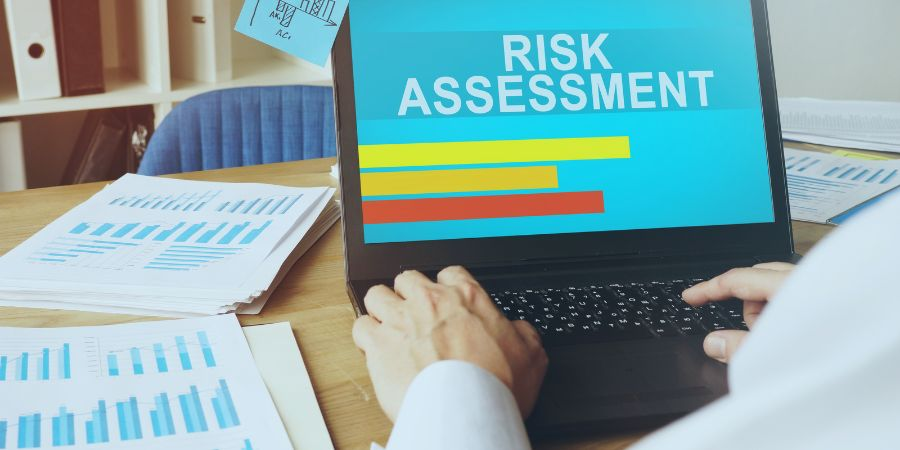Business Impact Analysis vs Risk Assessment: How do They Work Together?
Published on June 07, 2019
Last updated on June 25, 2024
Jump to a section
Introduction
Business continuity managers understand the importance of having a disaster recovery plan in place, but it's not enough to achieve business continuity during disruptions. The plan must be properly created, tested, and updated regularly to ensure that critical business processes can still function in the event of a disaster. This is where business impact analysis and risk assessment come in.

What Are Business Impact Analysis (BIA) And Risk Assessment?
Business impact analysis and risk assessments are information-gathering techniques used to identify critical functions within a business and the potential risks that would affect normal operations. A business can face many challenges, such as power outages to cyber attacks or natural disasters, so it's important to be prepared to keep your business afloat during disruptions.
Business impact analysis
A Business Impact Analysis identifies critical business processes and determines the potential impact of a disruption to those processes. By understanding which ones are critical to the organisation and the impact of a disruption, business continuity managers can prioritise resources and efforts to ensure that the most important functions are preserved, or at least, can be quickly recovered.
Risk Assessment
Risk assessment seeks to identify potential threats and vulnerabilities to the organisation and the likelihood and potential impact of those risks. Assets put at risk can include people, property, supply chain, information technology, business reputation and contract obligations. This helps business continuity managers to understand which risks are most likely to impact critical business processes and develop bespoke strategies to mitigate those risks.
Business impact analysis vs risk assessment
By combining BIA and risk assessment, business continuity managers can create a more comprehensive and effective disaster recovery plan. The risk assessment helps to identify potential threats, while the BIA helps prioritise which processes are most critical to the business. Both are key components of a business continuity plan and are used to create a plan that is tailored to the specific needs of the organisation.

So, What Comes First?
A BIA would usually be completed first, before a risk assessment. Because critical business functions must be preserved to keep your operations going during a disaster, you must understand what impact the loss of those functions would have on your business to come up with the most appropriate plan.
With this knowledge, you can then look at the risks and prioritise them based on the likelihood of the risk to occur and those that would have the greatest impact on critical business functions as identified in the BIA.
You can see how this would be a cyclical process with new activities and functions being added to the business, which would bring new potential hazards and impacts that would have to be assessed for criticality and prioritised again and again.
Who Carries Out The Business Impact Analysis And Risk Assessment?
A BIA can be performed internally by creating a project team from existing departments or by using specifically trained Business Continuity personnel, either in-house or external to the company.
Those responsible would communicate with every department of the business to identify all business functions and asses those which are critical to the normal operations of the business and document the findings.
These findings can then be reviewed by senior management to devise a business continuity plan and disaster recovery strategy that takes into account maximum permissible downtime for important business functions and acceptable losses in areas such as data, finances and reputation. Senior managers need to review and update the BIA periodically and as business operations change.
Risk Assessments don't necessarily need specialised trained individuals to carry them out. However, an employer must appoint someone who has the necessary skills, knowledge and experience to manage health and safety and carry out a risk assessment.

A Brief History of Business Impact Analysis and Risk Assessment
As humans go, we have always assessed risks, but it is believed that the modern terms for managing risk arose after World War II. It is believed the discipline mostly began as a study of using insurance to manage risk.
Later, from the 1950s to the 1970s, risk managers began to realise that it was too expensive to manage every risk with insurance, so the discipline began to expand to alternative methods. For example, training and safety programs were brought in to mitigate those identified risks and hazards.
With more and more companies accepting the risks themselves (risk retention) now rather than risk transfer (insurance) - it's all about weighing it up and determining what's best for the company i.e. which is the most cost-effective.
The first Business Impact Analysis (BIAs) was brought into practice in the 1980s, due to a gradual progression within Business Continuity towards some consideration of protecting other elements of the organisation than just the large technology elements, which were deemed to be the most important at the time.
A closer look at other business processes then began. However, the market was still majorly concentrated on the functionality of a business in terms of its hardware and systems until the 1990s when it became more inclusive of other business functions including its employees.
The Bottom Line
In a world where business disruptions are an everyday occurrence and affect organisations worldwide, it's critical to make sure you have the most effective business continuity plan in place to ensure your organisation can recover to its full working capacity as quickly as possible.
Business impact analysis and risk assessment are key elements of a comprehensive disaster recovery plan. By understanding which processes are critical to the organisation and the potential risks and hazards that could impact those processes, business continuity managers can be more prepared by creating a business continuity plan that is tailored to the specific needs of the organisation.

Business continuity tools such as Business Continuity Management Software (BCMS) automate this process for you by collecting and analysing data that help you identify critical processes and potential risks. A BCMS can also help streamline the disaster recovery planning process, making it easier to manage and update your plan as needed.
Continuity2 helps organisations achieve complete resilience and business continuity. We ensure resilience professionals across the world are able to do their jobs better, faster, and easier. C2 Meridian is a web-based tool designed to automate and assist the day-to-day management of an organisation's Operational Resilience & Business Continuity Management System (BCMS). Book a demo today and see it in action.
Written by Grace Lowe
Operations Manager at Continuity2
With a solid background in sales and support, Grace manages day-to-day activities so that business processes run smoothly, efficiently, and effectively. For the past 3 years, Grace has built and maintained strong relationships with clients, maximising their Business Continuity and Resilience efforts to the fullest.


Written by Grace Lowe
Operations Manager at Continuity2
With a solid background in sales and support, Grace manages day-to-day activities so that business processes run smoothly, efficiently, and effectively. For the past 3 years, Grace has built and maintained strong relationships with clients, maximising their Business Continuity and Resilience efforts to the fullest.